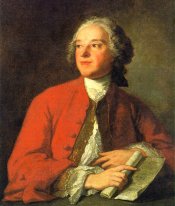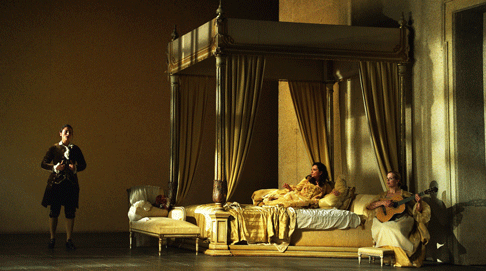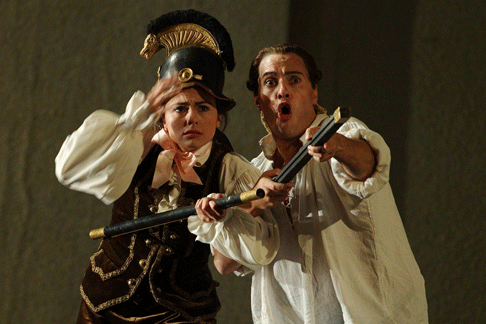
30 May 2011
Les Noces de Figaro in Paris
This is the one by Giorgio Strehler that opened at Versailles in 1973 and since has endured twenty-three incarnations, first at the Garnier and later at the Bastille.
English Touring Opera are delighted to announce a season of lyric monodramas to tour nationally from October to December. The season features music for solo singer and piano by Argento, Britten, Tippett and Shostakovich with a bold and inventive approach to making opera during social distancing.
This tenth of ten Live from London concerts was in fact a recorded live performance from California. It was no less enjoyable for that, and it was also uplifting to learn that this wasn’t in fact the ‘last’ LfL event that we will be able to enjoy, courtesy of VOCES8 and their fellow vocal ensembles (more below …).
Ever since Wigmore Hall announced their superb series of autumn concerts, all streamed live and available free of charge, I’d been looking forward to this song recital by Ian Bostridge and Imogen Cooper.
The Sixteen continues its exploration of Henry Purcell’s Welcome Songs for Charles II. As with Robert King’s pioneering Purcell series begun over thirty years ago for Hyperion, Harry Christophers is recording two Welcome Songs per disc.
Although Stile Antico’s programme article for their Live from London recital introduced their selection from the many treasures of the English Renaissance in the context of the theological debates and upheavals of the Tudor and Elizabethan years, their performance was more evocative of private chamber music than of public liturgy.
In February this year, Albanian soprano Ermonela Jaho made a highly lauded debut recital at Wigmore Hall - a concert which both celebrated Opera Rara’s 50th anniversary and honoured the career of the Italian soprano Rosina Storchio (1872-1945), the star of verismo who created the title roles in Leoncavallo’s La bohème and Zazà, Mascagni’s Lodoletta and Puccini’s Madama Butterfly.
Evidently, face masks don’t stifle appreciative “Bravo!”s. And, reducing audience numbers doesn’t lower the volume of such acclamations. For, the audience at Wigmore Hall gave soprano Elizabeth Llewellyn and pianist Simon Lepper a greatly deserved warm reception and hearty response following this lunchtime recital of late-Romantic song.
Collapsology. Or, perhaps we should use the French word ‘Collapsologie’ because this is a transdisciplinary idea pretty much advocated by a series of French theorists - and apparently, mostly French theorists. It in essence focuses on the imminent collapse of modern society and all its layers - a series of escalating crises on a global scale: environmental, economic, geopolitical, governmental; the list is extensive.
For this week’s Live from London vocal recital we moved from the home of VOCES8, St Anne and St Agnes in the City of London, to Kings Place, where The Sixteen - who have been associate artists at the venue for some time - presented a programme of music and words bound together by the theme of ‘reflection’.
'Such is your divine Disposation that both you excellently understand, and royally entertaine the Exercise of Musicke.’
Amongst an avalanche of new Mahler recordings appearing at the moment (Das Lied von der Erde seems to be the most favoured, with three) this 1991 Mahler Second from the 2nd Kassel MahlerFest is one of the more interesting releases.
‘And there was war in heaven: Michael and his angels fought against the dragon; and the dragon fought and his angels, And prevailed not; neither was their place found any more in heaven … that old serpent … Satan, which deceiveth the whole world: he was cast out into the earth, and his angels were cast out with him.’
If there is one myth, it seems believed by some people today, that probably needs shattering it is that post-war recordings or performances of Wagner operas were always of exceptional quality. This 1949 Hamburg Tristan und Isolde is one of those recordings - though quite who is to blame for its many problems takes quite some unearthing.
There was never any doubt that the fifth of the twelve Met Stars Live in Concert broadcasts was going to be a palpably intense and vivid event, as well as a musically stunning and theatrically enervating experience.
‘Love’ was the theme for this Live from London performance by Apollo5. Given the complexity and diversity of that human emotion, and Apollo5’s reputation for versatility and diverse repertoire, ranging from Renaissance choral music to jazz, from contemporary classical works to popular song, it was no surprise that their programme spanned 500 years and several musical styles.
The Academy of St Martin in the Fields have titled their autumn series of eight concerts - which are taking place at 5pm and 7.30pm on two Saturdays each month at their home venue in Trafalgar Square, and being filmed for streaming the following Thursday - ‘re:connect’.
The London Symphony Orchestra opened their Autumn 2020 season with a homage to Oliver Knussen, who died at the age of 66 in July 2018. The programme traced a national musical lineage through the twentieth century, from Britten to Knussen, on to Mark-Anthony Turnage, and entwining the LSO and Rattle too.
With the Live from London digital vocal festival entering the second half of the series, the festival’s host, VOCES8, returned to their home at St Annes and St Agnes in the City of London to present a sequence of ‘Choral Dances’ - vocal music inspired by dance, embracing diverse genres from the Renaissance madrigal to swing jazz.
Just a few unison string wriggles from the opening of Mozart’s overture to Le nozze di Figaro are enough to make any opera-lover perch on the edge of their seat, in excited anticipation of the drama in music to come, so there could be no other curtain-raiser for this Gala Concert at the Royal Opera House, the latest instalment from ‘their House’ to ‘our houses’.
"Before the ending of the day, creator of all things, we pray that, with your accustomed mercy, you may watch over us."

This is the one by Giorgio Strehler that opened at Versailles in 1973 and since has endured twenty-three incarnations, first at the Garnier and later at the Bastille.
Anyone who is anyone in the pantheon of Mozart interpreters over the last forty years has gone through the paces of this Strehler masterpiece.
It did have a brief respite during the Gerard Mortier five year reign of terror. To everyone's relief it is back now ostensibly as a tribute to Rolf Liebermann (the celebrated progressive impresario who succeeded in staying in conservative Paris for seven years in the nineteen-seventies) but actuality it is an appeasement to Parisian audiences for whom it has become, purely and simply, the Mozart masterpiece.
Based on its current edition at the Bastille it is a Marriage of Figaro none of us should go without. Not to worry if you have missed it so far. It will surely be back, and with whoever are the stars of the moment. The Strehler Noces is as Parisian as is, well, the Opéra or for that matter the Tour Eiffel. It is the embodiment of the elegance, refinement and grace that define La Ville-Lumière.
Its roots are in mannerisms, the little movements of physical comedy that were sculpted by the comedians of the Italian renaissance, then refined by Italy's eighteenth century dramatists, and finally distilled by Giorgio Strehler. It is like the theatrics of the French royal courts that have become elaborated over the centuries into French politesse, haute couture, cuisine, etc. Simply to say that the ultra controlled, hyper refined theatrics of Giorgio Strehler very well mirror an idealized French spirit.
Though strange to say it was the musical refinement of the current production that very nearly upstaged the Strehler elegance. Israeli conductor Dan Ettinger unleashed the lyricism Mozart lavished on the individual instruments of the orchestra that brought this familiar music to new plateaux of delicate pleasures. The horn duet in Se vuol ballare, the oboe solo in Dove sono, the resonant pizzicato strings in Deh vieni leap out as examples, but the overwhelming orchestral lyricism was everywhere and always.
The cast was perfection. The program bio of Uruguayan bass Erwin Schrott unabashedly declares him to be the Figaro of the moment, a claim well proven by his distinctive dark voice, physical agility and sympathetic authority. His nearly speech-like delivery of recitative was remarkable. The Susanna of German soprano Julia Kleiter was physically, even vocally well matched to the Countess of German soprano Dorothea Röschmann to make Strehler's very presentational staging of the disguises far less tiresome than usual.
Both sopranos are no-nonsense artists, penetrating the heart of the music and letting it naturally flow to the obvious great pleasure of the maestro who melted Mozart's eloquent orchestra to their voices. It was extraordinary music making. British baritone Christopher Maltman brought bark and bite and unusual fun to the Count, plus new, sly insight into his often tiresome aria that perceptibly deepened his character and enlivened the denouement of Figaro's financial predicament.

American mezzo Isabel Leonard may now compete with Federica von Stade as the Cherubino of your dreams, combining easy postures with consummate charm, upholding the impeccable musicianship that validates this travesty. The there-can-be-no-opera-in-Paris-without corps de ballet crashed the wedding scene, and the intrusion only gained validity when Mlle. Leonard leapt into the balletic fray with a virtuostic display of dance that conclusively proved her manhood (one did wonder how la Von Stade and all the others pulled this scene off).
The Marcellina of British mezzo/comedienne Ann Murray was exemplary. The Bartolo of Maurizio Muraro and the Basilio of Robin Leggate were rendered less present than usual in this production by the persuasive musicality of the five principals.
The extant members of the original production team were said to be involved in mounting this latest incarnation — Ezio Frigerio (sets and costumes), Franca Squarciapino (costumes), Marise Flach (movement). The actual credit for this and perhaps many other incarnations of the Strehler Noces belongs to Humbert Camerlo, an original member of the Libermann directorial staff who will have adapted the individual personalities of its current interpreters to the original Strehler conception.
Michael Milenski
